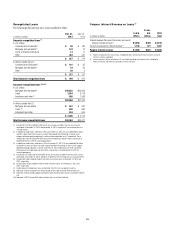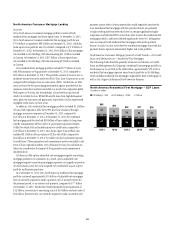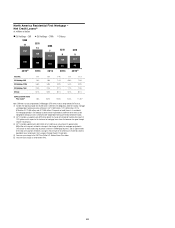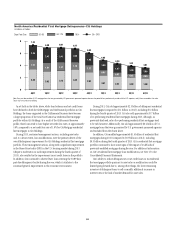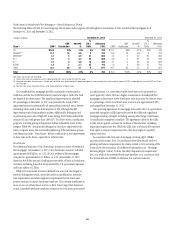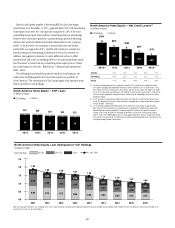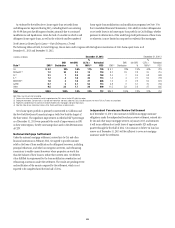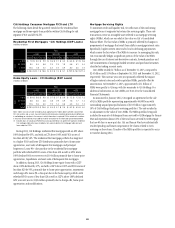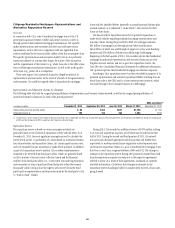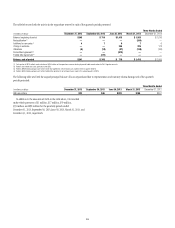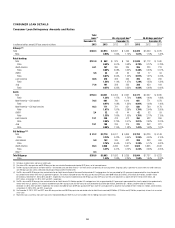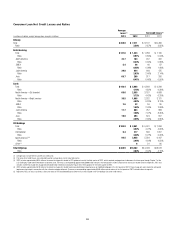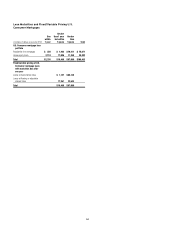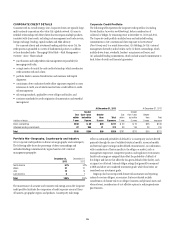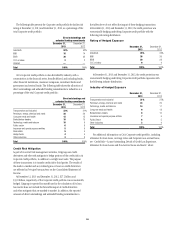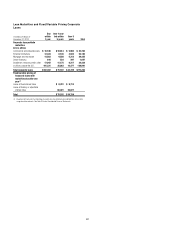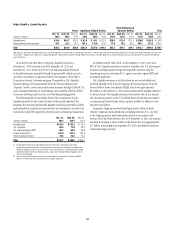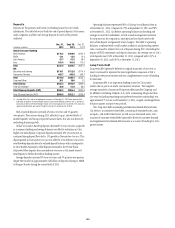Citibank 2013 Annual Report Download - page 108
Download and view the complete annual report
Please find page 108 of the 2013 Citibank annual report below. You can navigate through the pages in the report by either clicking on the pages listed below, or by using the keyword search tool below to find specific information within the annual report.
90
Citigroup Residential Mortgages—Representations and
Warranties Repurchase Reserve
Overview
In connection with Citi’s sales of residential mortgage loans to the U.S.
government-sponsored entities (GSEs) and private investors, as well as
through private-label residential mortgage securitizations, Citi typically
makes representations and warranties that the loans sold meet certain
requirements, such as the loan’s compliance with any applicable loan
criteria established by the buyer and the validity of the lien securing the loan.
The specific representations and warranties made by Citi in any particular
transaction depend on, among other things, the nature of the transaction
and the requirements of the investor (e.g., whole loan sale to the GSEs versus
loans sold through securitization transactions), as well as the credit quality
of the loan (e.g., prime, Alt-A or subprime).
These sales expose Citi to potential claims for alleged breaches of its
representations and warranties. In the event of a breach of its representations
and warranties, Citi could be required either to repurchase the mortgage
loans with the identified defects (generally at unpaid principal balance plus
accrued interest) or to indemnify (“make whole”) the investors for their
losses on these loans.
Citi has recorded a repurchase reserve for its potential repurchase or
make-whole liability regarding residential mortgage representation and
warranty claims. During the period 2005-2008, Citi sold approximately
$91 billion of mortgage loans through private-label securitizations,
$66.4 billion of which was sold through its legacy Securities and Banking
business and $24.6 billion of which was sold through CitiMortgage.
Beginning in the first quarter of 2013, Citi considers private-label residential
mortgage securitization representation and warranty claims as part of its
litigation accrual analysis and not as part of its repurchase reserve. See
Note 28 to the Consolidated Financial Statements for additional information
Citi’s potential private-label residential mortgage securitization exposure.
Accordingly, Citi’s repurchase reserve has been recorded for purposes of its
potential representation and warranty repurchase liability resulting from its
whole loan sales to the GSEs and, to a lesser extent private investors, which
are made through Citi’s Consumer business in CitiMortgage.
Representation and Warranty Claims by Claimant
The following table sets forth the original principal balance of representation and warranty claims received, as well as the original principal balance of
unresolved claims by claimant, for each of the periods presented
GSEs and others (1)
In millions of dollars December 31, 2013 September 30, 2013 June 30, 2013 March 31, 2013 December 31, 2012
Claims during the three months ended $ 80 $152 $647 $1,126 $ 787
Unresolved claims at 169 153 264 1,252 1,229
(1) The decreases in claims during the three months ended and unresolved claims at September 30, 2013 and June 30, 2013 primarily reflect the agreements with Fannie Mae and Freddie Mac during the second quarter
of 2013 and the third quarter of 2013, respectively. See “Repurchase Reserve” below.
Repurchase Reserve
The repurchase reserve is based on various assumptions which are
primarily based on Citi’s historical repurchase activity with the GSEs. As of
December 31, 2013, the most significant assumptions used to calculate the
reserve levels are the: (i) probability of a claim based on correlation between
loan characteristics and repurchase claims; (ii) claims appeal success rates;
and (iii) estimated loss per repurchase or make-whole payment. In addition,
as part of its repurchase reserve analysis, Citi considers reimbursements
estimated to be received from third-party sellers, which are generally based
on Citi’s analysis of its most recent collection trends and the financial
viability of the third-party sellers (i.e., to the extent Citi made representation
and warranties on loans it purchased from third-party sellers that remain
financially viable, Citi may have the right to seek recovery from the third
party based on representations and warranties made by the third party to Citi
(a “back-to-back” claim)).
During 2013, Citi recorded an additional reserve of $470 million relating
to its loan sale repurchase exposure, all of which was recorded in the first
half of 2013. During the second and third quarters of 2013, Citi entered
into previously-disclosed agreements with Fannie Mae and Freddie Mac,
respectively, to resolve potential future origination-related representation
and warranty repurchase claims on a pool of residential first mortgage loans
that were, in each case, originated between 2000 and 2012. The change in
estimate in the repurchase reserve during 2013 primarily resulted from GSE
loan documentation requests received prior to the respective agreements
referred to above. As a result of these agreements, and based on currently
available information, Citi believes that changes in estimates in the
repurchase reserve should generally be consistent with its levels of loan sales
going forward.



